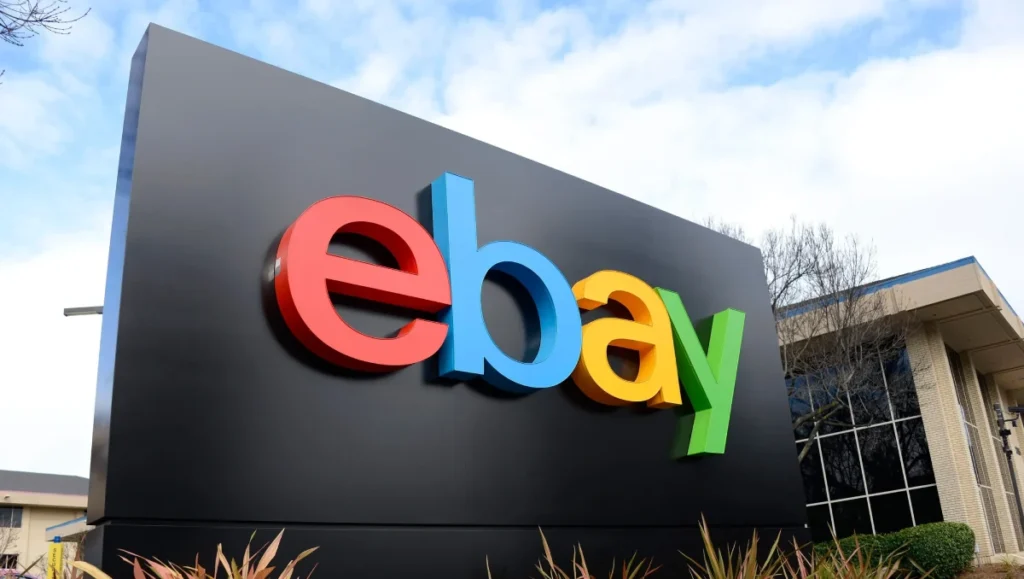In the age of e-commerce, two names stand out as giants in the industry: eBay and Amazon. Both platforms offer extensive product ranges, competitive prices, and unique selling propositions that have garnered millions of loyal customers worldwide. However, the question remains: which is better? In this blog, we’ll dive deep into various aspects of eBay online shopping and Amazon to help you decide which platform suits your needs best.

The Origin Stories: eBay and Amazon
Before we compare the two, let’s take a brief look at their histories.
eBay
Founded in 1995 by Pierre Omidyar, eBay began as an online auction site where users could buy and sell items in a competitive bidding format. This unique model allowed for a vast array of products, from collectibles and antiques to electronics and fashion. Over time, eBay evolved to include fixed-price listings, making it more accessible to users who preferred immediate purchases.
Amazon
Amazon was founded by Jeff Bezos in 1994, originally as an online bookstore. Its mission was to become “Earth’s most customer-centric company,” and it rapidly expanded its offerings to include virtually every type of product imaginable. Amazon introduced innovations like Amazon Prime, which offers fast shipping and exclusive content, and the Amazon Marketplace, where third-party sellers can list their products alongside Amazon’s own offerings.

User Experience and Interface
When it comes to user experience, both eBay and Amazon have distinct interfaces designed to cater to their users’ needs.
eBay Online Shopping
eBay’s interface is straightforward and user-friendly, emphasizing the auction-style listings. The homepage often showcases trending items and daily deals. Users can easily filter search results by auction or buy-it-now options, and there is a strong focus on the bidding process, which can be exciting for those looking to snag a deal.
One of the key features of eBay online shopping is the feedback system. Buyers and sellers can leave feedback for each other, creating a trust-based community where users can make informed decisions based on others’ experiences.
Amazon
Amazon’s interface is designed for efficiency and convenience. The homepage is tailored to individual users, showcasing personalized recommendations based on past purchases and browsing history. The search functionality is robust, with numerous filters to help users find exactly what they need quickly.
Amazon’s product pages are comprehensive, featuring detailed descriptions, high-quality images, and customer reviews. The one-click purchase option and streamlined checkout process further enhance the shopping experience, making it easy for users to complete transactions swiftly.
Product Range and Availability
Both eBay and Amazon boast extensive product catalogs, but there are notable differences in how these products are presented and sold.
eBay Online Shopping
eBay is known for its diverse range of products, especially in niche markets. From rare collectibles and vintage items to refurbished electronics and handmade crafts, eBay’s marketplace offers unique finds that are often unavailable on other platforms. The auction format is particularly appealing for collectors and bargain hunters who enjoy the thrill of competitive bidding.
In addition to auctions, eBay’s fixed-price listings provide a more traditional shopping experience. Many sellers offer new and used items at competitive prices, and the “Make Offer” option allows buyers to negotiate directly with sellers.
Amazon
Amazon’s product range is vast and comprehensive, covering almost every imaginable category. From household essentials and electronics to books and clothing, Amazon’s inventory is constantly expanding. The platform’s extensive network of warehouses and fulfillment centers ensures that products are readily available and can be shipped quickly to customers around the world.
Amazon also offers a wide range of exclusive products and brands through its private label offerings, such as AmazonBasics. Furthermore, the Amazon Marketplace allows third-party sellers to list their products, significantly expanding the variety available to customers.
Pricing and Deals
Price is often a deciding factor for many shoppers, and both eBay and Amazon have their strategies for offering competitive deals.
eBay Online Shopping
eBay’s auction model can lead to significant savings, especially if you’re willing to wait and bid strategically. Many items start at low prices, and with a bit of luck, buyers can secure products at a fraction of their retail value. Additionally, eBay frequently features daily deals and promotions across various categories.
Sellers on eBay also have the flexibility to set their prices, which can lead to a wide range of pricing options for similar products. This competition among sellers often results in lower prices for buyers.
Amazon
Amazon is known for its aggressive pricing strategies. The platform regularly monitors competitors’ prices and adjusts its own to ensure it remains competitive. Amazon Prime members benefit from exclusive deals, lightning deals, and early access to sales events like Prime Day.
Amazon’s Subscribe & Save program offers additional discounts on recurring purchases, and the platform frequently features special promotions and coupons across different product categories. The sheer volume of products sold on Amazon allows it to offer low prices consistently.
Shipping and Delivery
Fast and reliable shipping is crucial for online shoppers, and both eBay and Amazon have their approaches to meeting this demand.
eBay Online Shopping
Shipping on eBay varies widely depending on the seller. Some sellers offer free shipping, while others charge based on the item’s size, weight, and destination. Delivery times can also vary, with some sellers offering expedited shipping options and others relying on standard mail services.
eBay’s Global Shipping Program simplifies international purchases by handling customs and import duties on behalf of the buyer. However, shipping costs and delivery times for international orders can still be significant.
Amazon
Amazon is renowned for its shipping efficiency. Amazon Prime members enjoy free two-day shipping on millions of items, with some locations even offering same-day or next-day delivery. Non-Prime members can also benefit from free shipping on orders over a certain amount, though delivery times are generally longer.
Amazon’s extensive logistics network ensures that products are delivered quickly and reliably. The platform’s commitment to fast shipping is a major draw for customers who value convenience and speed.
Conclusion: Which is Better?
Determining whether eBay online shopping or Amazon is better ultimately depends on your individual preferences and shopping habits.
Choose eBay if:
- You enjoy the thrill of bidding in auctions and potentially getting great deals.
- You are looking for unique, vintage, or collectible items that might not be available elsewhere.
- You appreciate a community-based platform with detailed seller feedback.
Choose Amazon if:
- You value fast and reliable shipping, especially with an Amazon Prime membership.
- You prefer a seamless and efficient shopping experience with a wide range of products.
- You appreciate robust customer service and straightforward return policies.
In conclusion, both eBay and Amazon have their strengths and cater to different types of shoppers. eBay online shopping offers a unique marketplace experience with its auction format and diverse product range, while Amazon excels in convenience, speed, and customer service. By understanding the differences between these platforms, you can make an informed decision and choose the one that best meets your needs. Happy shopping!
















